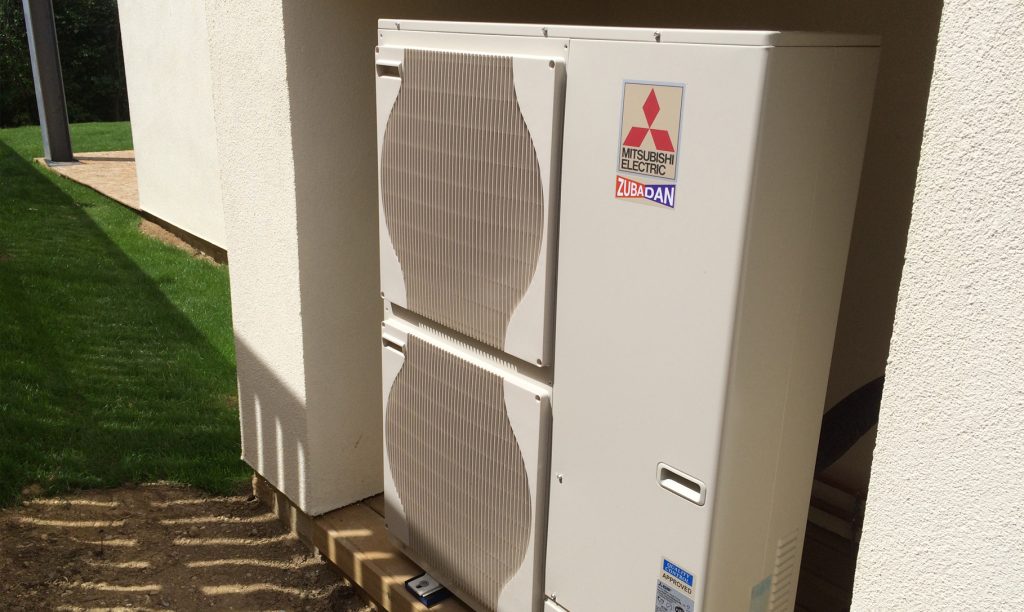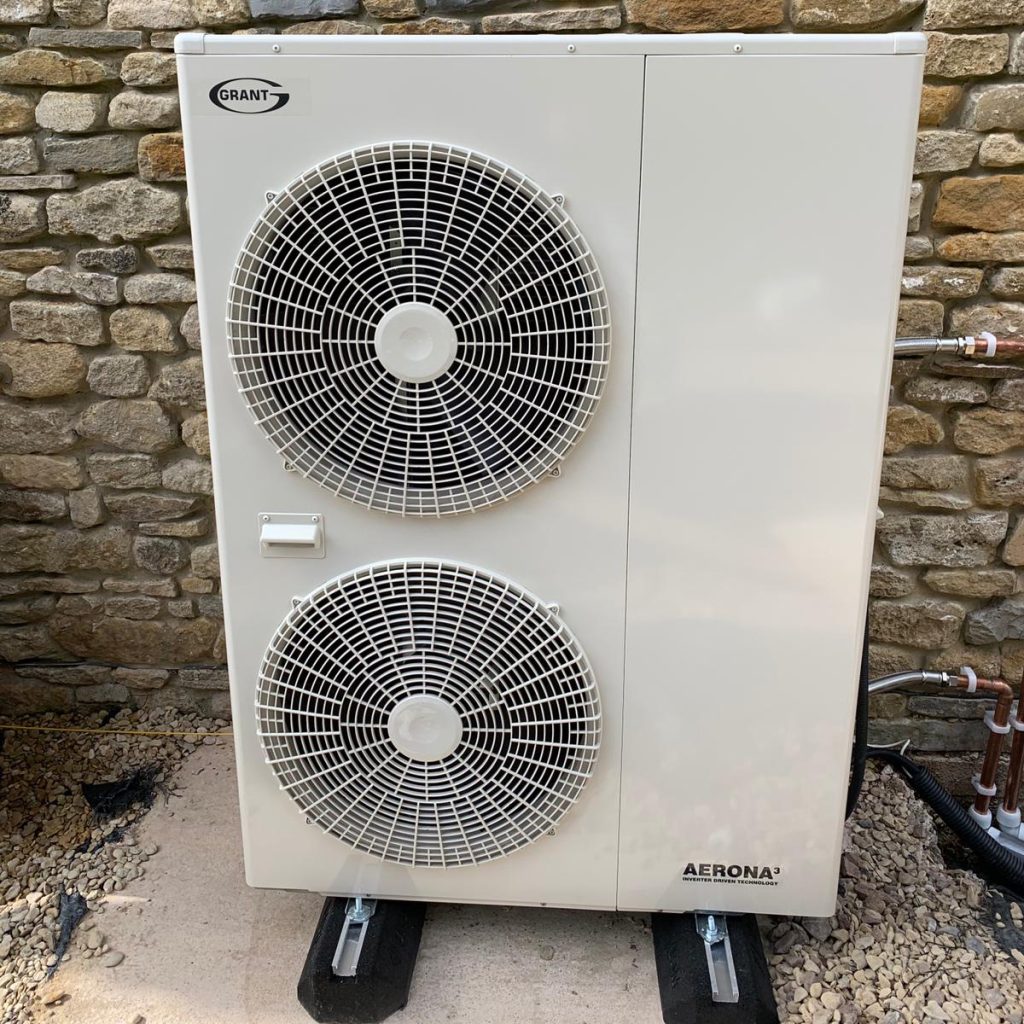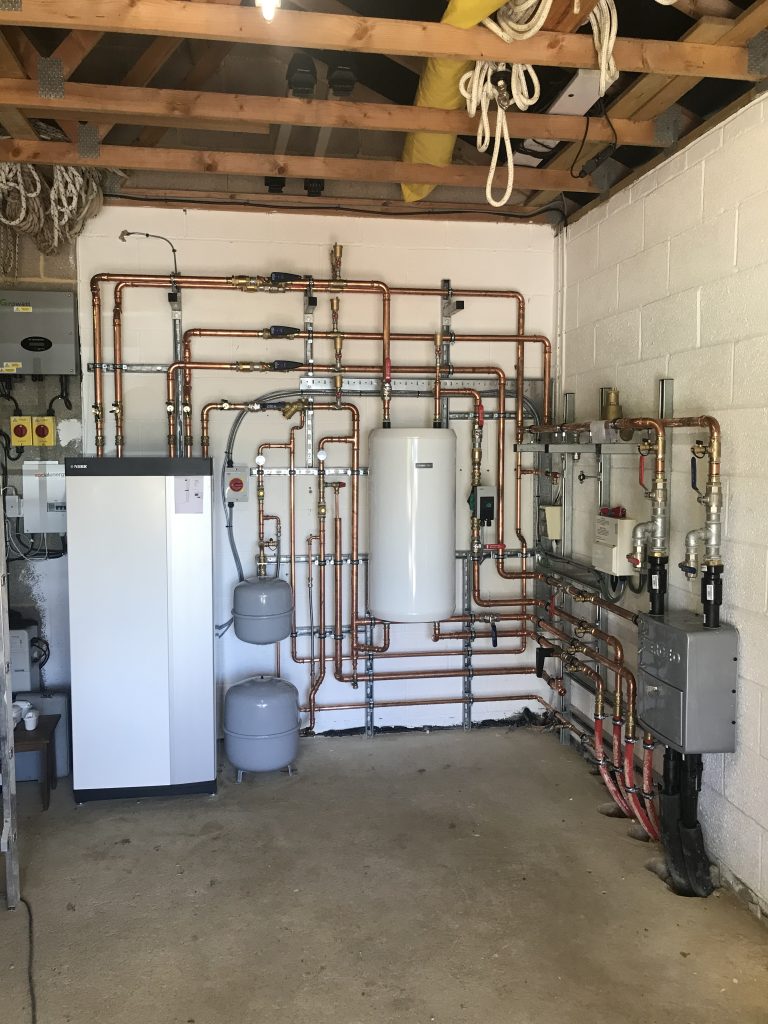RENEWABLES
Generate heat for your home with low-carbon, renewable technologies
MPHS is a Microgeneration Registered Installer which means we are fully qualified to offer HEAT PUMP and BIOMASS technologies.
The Microgeneration Certification Scheme (MCS) is an industry-led and internationally recognised quality assurance scheme, supported by the Department of Energy and Climate Change (DECC). MCS certifies microgeneration products used to produce electricity and heat from renewable sources. MCS also certifies installation companies to ensure the microgeneration products have been installed and commissioned to the highest standard for the consumer. The certification is based on a set of installer standards and product scheme requirements.
MCS is linked to the Government’s finance schemes and incentives. In order to access the Renewable Heat.
Incentive (RHI), both the installed product and the installation company must be MCS certified.

Air source heat pumps
What is an air source heat pump
An air source heat pump harnesses free and clean thermal energy in the air to heat your home. As it only requires a small amount of electricity to achieve this, they are four times more efficient than fossil-fuel-dependent gas boilers.
It’s why an air source heat pump won’t just slash your CO2 emissions by 75%, it’ll shrink your heating costs too. In fact, people who switch to an air source heat pump cut their household heating costs by 25%.
How does an air source heat pump work?
While an air source heat pump uses the latest technology, the process of transferring heat from the air to your home is quite simple. An air source heat pump works a little bit like a refrigerator in reverse but harnesses the energy from the air to provide you with energy-efficient heating in the winter and cooling in the summer, depending on the type of heat pump you have.
Step 1 — heat absorption and evaporation
The heat pump, which sits outside your home, draws in the surrounding air using a fan and extracts heat from it. This heat is absorbed by the refrigerant inside the heat pump, which turns from liquid to gas and enters the unit’s compressor.
Step 2 — compression and condensation
The compressor pressurises the vapourised refrigerant, causing its temperature to rise. The high-temperature, high-pressure refrigerant then enters a condenser, where it turns into a liquid again.
Step 3 — heat exchange
The hot refrigerant liquid passes across a heat exchanger where it releases heat to the surrounding air or water in your home.
Step 4 — cooling and expansion valve
The high-pressure liquid refrigerant moves through an expansion valve, where its pressure is reduced. The cooler refrigerant turns back into a low-pressure, low-temperature vapour, ready to start the process again.

The benefits of an air source heat pump
An air source heat pump is better for both your energy bills and the environment. From switching your gas boiler to an air source heat pump with us you can:
- Save 25% on your household heating costs
- Never pay another gas heating bill again
- Cut your reliance on energy providers
- Produce 75% fewer carbon emissions
- £7500 Boiler Upgrade Scheme
Why switch to an air source heat pump with MPHS?
The way we heat and power our homes hasn’t changed for decades. But these methods are not only costly, but bad for the environment too. With an air source heat pump, there’s no more relying on fossil fuels and no more eye-watering heating costs. Just hassle-free clean energy-tech that’s affordable and sustainable.
With around 20 million heat pumps already installed across Europe, the drive for clean energy is relentless and at the forefront of this energy revolution is MPHS. We are a modern energy-tech company dedicated to providing clean and cheaper energy for every home. We also make switching to an air source heat pump affordable and hassle free by taking care of the entire process, from providing a home energy assessment to installing and maintaining your system.
Contact us today for a no-obligation quote and join the green energy revolution today.
GROUND SOURCE HEAT PUMPS
What is an air source heat pump
Ground source heat pumps (GSHPs) are units which are installed inside a building, they are powered by electricity. Ground source heat pumps are connected to a series of pipes called ground collector which are laid underground, either in horizontal trenches around 1.5 – 2 metres deep or in vertical boreholes, around 100 metre deep. At these depths, the ground maintains an average temperature of 10-12°C all year round.
A water/refrigerant fluid (often referred to as brine) is circulated through the ground collectors, absorbing thermal energy from the ground and circulating it back to the heat pump. A compressor inside the heat pump increases the temperature and it’s then passed to a heat exchanger which transfers the heat to hot water cylinders, radiators and underfloor heating to provide space heating and hot water.
Once the fluid has delivered heat to your distribution system, it’s then passed through an expansion valve which cools it before it repeats the circuit all over again.

Geothermal advantages
- Low running costs.
- Energy efficient.
- Low carbon heating.
- Provides cooling and heating.
- Constant and inexhaustible.
- Virtually silent.
- Increases property value.
- £7500 Boiler Upgrade Scheme
Servicing
MPHS Ltd can also service most makes of AIR SOURCE HEAT PUMPS, GROUND SOURCE HEAT PUMPS and SOLAR THERMAL systems.
Choosing the best renewable technology
As accredited installers MPHS will be able to assess your home and help you choose the best setup to meet your needs.
